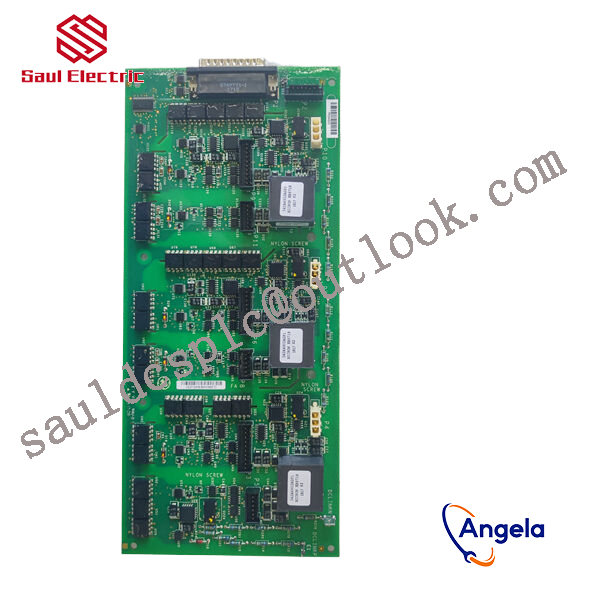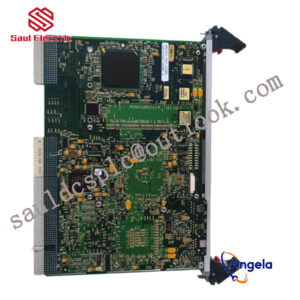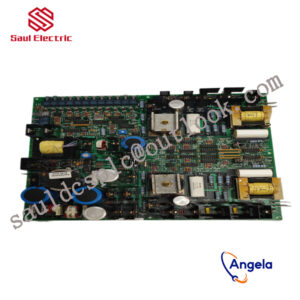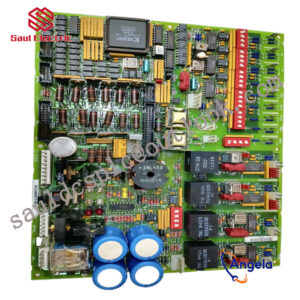Description
DS200SBCAG1A Product Introduction
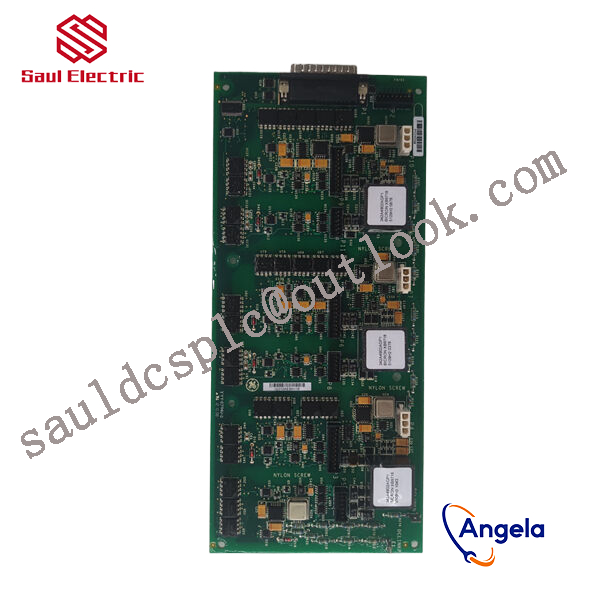
The specific application scope of the product
will depend on the needs of system integration and industrial application, but generally speaking, this type of embedded controller module can be applied to the following categories:
manufacturing processes, etc.
monitoring and control system.
of the controller module, as well as the specific needs of the customer.
designed to manage gas or steam turbines.
It has a CIMPLICITY graphical interface and an HMI with software suitable for running heavy-duty turbines.
be installed at the bottom of the cabinet. For a small setup that is easy to serve a triple redundant system, up to three components can be installed side by side.
he board can operate within a temperature range of 0 to 65 degrees Celsius without the need for a fan for cooling. NFPA Class 1. This board can be used for two applications.
How does ABB robot multi-task? Detailed steps on how to use ABB robot multitasking1.ABB robots support multi-tasking (each robot body can support up to one motion task).2. To use multi-tasking, the robot must have the 623-1 mulTItasking option3. How to create a new multi-task?4. Control panel, configuration5.Theme controller6. Enter the task and create a new oneAt this time, it must be set to normal, otherwise programming cannot be performed. After all programming and debugging are completed, set it back to semi staTIc and it will start running automatically.7. Restart8. The program editor enters t2 task.9. How to transfer data between multiple tasks? The following takes the bool amount flag1 transferred between tasks as an example (that is, if any task modifies the flag1 value, the flag1 value of the other task is also modified)10. Both the front-end and the back-end must create data. The storage type must be a variable with the same type and the same name, for example:Pers bool flag1That is to say, both tasks must have this flag1, and it must be a variable variable.11. In t2, the code is as follows12. The foreground task code is as followsThe above can realize the background task to scan the di_0 signal in real time. If the di_0 signal changes to 1, flag1 is true. According to logic, the front desk waits for flag1 to be true. After executing waituntil, set flag1 to false13. How to run?Click on the bottom one in the lower right corner of the teach pendant, make sure both tasks are checked, and then run it. You can test it.14. There is no problem in the test. Enter the configuration interface, change t2 to semi staTIc, and restart. At this time, t2 cannot be selected and it has started running automatically.Analysis of ABB Robot Simulation TechnologyThe competitive pressure in the industrial automation market is increasing day by day, and customers are demanding higher efficiency in production to reduce prices and improve quality. Spending time testing or commissioning a new product at the beginning of a new product is not feasible today because it would mean stopping existing production to program the new or modified part. ABB”s RobotStudio is built on ABB VirtualController. We can use it to easily simulate the on-site production process on the computer, allowing customers to understand the development and organization of the production process.robotstudio features:1. CAD importRobotStudio can easily import data in various mainstream CAD formats, including IGES, S TE P, VRML, VDAFS, ACIS and CA TI A, etc. Robot programmers can use these precise data to program robots with higher accuracy, thus improving product quality.2. Automatic path generationOne of the most time-saving features in RobotStudio. By using a CAD model of the part to be processed, this function can automatically generate the robot position (path) needed to track the machining curve in just a few minutes, a task that would normally take hours or even days.3. Program editorThe program editor (Program Maker ) can generate robot programs, allowing users to develop or maintain robot programs offline in a Windows environment, which can significantly shorten programming time and improve program structure.4. Path optimizationThe Simulation Monitor is a visual tool for robot motion optimization, with red lines showing where improvements can be made to make the robot operate in the most efficient way.5. Automatically analyze stretching abilityUsers can use this function to move the robot or workpiece arbitrarily until all positions are accessible, and the work cell floor plan verification and optimization can be completed within minutes.6. Collision detectionCollision detection function can avoid serious damage caused by equipment collision. After selecting detection objects, RobotStudio can automatically monitor and display whether these objects will collide when the program is executed.7. Online homeworkUse RobotStudio to connect and communicate with real robots, and perform convenient monitoring, program modification, parameter setting, file transfer, backup and recovery operations on the robot.
IS215VCMIH2B I/O excitation redundant module GE
DS200SDCIG1AEB Processor/Controller Mark VI System
IS230TNTRH1C High performance processor module GE
IS220PPDAH1A Processor/Controller Mark VI System
IS220PRTDH1B GE power control board
IS400JPDHG1ABB From General Electric in the United States
IS200TPROS1CBB Processor/Controller Mark VI System
IS210AEDBH3A From General Electric in the United States
IS200TRLYH1B Processor/Controller Mark VI System
DS200VPBLG1AEE High performance processor module GE
IS200DSPXH2CAA From General Electric in the United States
IS200ERSCG2A High performance processor module GE
IS220PAOCH1A I/O excitation redundant module GE
DS200TCQAG1BHF From General Electric in the United States
IS220YSILS1BB From General Electric in the United States
IS200DTAIH1ACC Gas turbine system Mark VI
DS3820PSCB1C1B I/O excitation redundant module GE
IS420UCSBH1A Processor/Controller Mark VI System
IS220PAICH1B I/O excitation redundant module GE
IS210DPWAG1AA From General Electric in the United States
DS200DMCBG1A Processor/Controller Mark VI System
IS220PDIOH1A I/O excitation redundant module GE
IS220PSCAH1A High performance processor module GE
IS200GDDDG1A From General Electric in the United States
IS220YDIAS1A Gas turbine system Mark VI
IS200SRLYH2AAA GE power control board
IS215UCVEM06A Gas turbine system Mark VI
IS420UCSBH1A I/O excitation redundant module GE
IS210TRPGH1B Processor/Controller Mark VI System
DS200TCCBG8BED Processor/Controller Mark VI System
IS215ACLEH1B From General Electric in the United States
IS200TRESH1A From General Electric in the United States
IS215UCCAM03 Processor/Controller Mark VI System
DS200SLCCG3ACC Processor/Controller Mark VI System
DS200TCQCG1BHF Processor/Controller Mark VI System
IS200TSVCH1AJE High performance processor module GE
IS200ISBDG1AAA GE power control board
IS200VAICH1D High performance processor module GE
IS220PPDAH1A GE power control board
IS220PAOCH1BD GE power control board
IS230SAISH1A High performance processor module GE
IS215ACLEH1B Gas turbine system Mark VI
IS200VATFG1AAA I/O excitation redundant module GE
IS220PRTDH1A From General Electric in the United States
IS200TTURH1B High performance processor module GE
IS200TGENH1A Processor/Controller Mark VI System
IS220PAICHIA I/O excitation redundant module GE
IS200EISBH1AAA High performance processor module GE
IS2020RKPSG3A Processor/Controller Mark VI System
IS200VAICH1DAB GE power control board
IS420ESWBH3A Gas turbine system Mark VI
DS200PLIBG1ACA GE power control board
IS400TCASH1AEC I/O excitation redundant module GE
IS200TNH1A Processor/Controller Mark VI System
IS220PDIOH1B I/O excitation redundant module GE
IS210DTTCH1AA GE power control board
DS200CPCAG1A Processor/Controller Mark VI System
DS200SDCCG5AHD I/O excitation redundant module GE
IS215VCMIH1B Gas turbine system Mark VI

